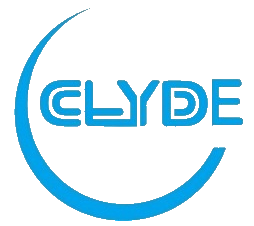What are the causes of corrosion in heat exchangers?
There are many types of heat exchangers, which are widely used in chemical production and play an important role. They are commonly used equipment in many industrial sectors. During the use of heat exchangers, corrosion often occurs. What are the reasons for this situation? Below is a brief introduction.
1. Selection of materials for heat exchangers: The determining factor of which material to use is its economy. Tube materials include stainless steel, copper nickel alloy, nickel based alloy, titanium and zirconium, etc. Welded tubes are used except for situations where they cannot be used in industry. Corrosion resistant materials are only used for the tube side, and carbon steel is used for the shell side.
2. Metal corrosion of heat exchangers
1) The principle of metal corrosion: Metal corrosion refers to the destruction of metals under the chemical or electrochemical action of the surrounding medium, and often under the combined action of physical, mechanical, or biological factors, that is, the destruction of metals under the influence of their environment.
2) Several common types of corrosion damage to heat exchangers:
a. Uniform corrosion: The macroscopic uniform corrosion damage that occurs on the entire surface exposed to the medium or over a large area is called uniform corrosion.
b. Contact corrosion: Two metals or alloys with different potentials come into contact with each other and are immersed in an electrolyte solution, causing current to flow between them. The corrosion rate of the metal with a positive potential decreases, while the corrosion rate of the metal with a negative potential increases.
c. Selective corrosion: The phenomenon in which a certain element in an alloy preferentially enters the medium due to corrosion is called selective corrosion.
d. Pore corrosion: Corrosion that is concentrated on individual small points on the metal surface and has a greater depth is called pitting corrosion, also known as small hole corrosion or pitting corrosion.
e. Gap corrosion: Severe gap corrosion occurs in the gaps and covered areas of metal surfaces.
f. Erosion corrosion: Erosion corrosion is a type of corrosion that accelerates the corrosion process due to the relative motion between the medium and the metal surface.
g. Intergranular corrosion: intergranular corrosion is a type of corrosion that preferentially corrodes the grain boundaries and adjacent areas of metals or alloys, while the corrosion of the grains themselves is relatively small.
h. Stress corrosion cracking (SCC) and corrosion fatigue SCC are material fractures caused by the combined action of corrosion and tensile stress in a certain metal dielectric system.
i. Hydrogen damage: Metal in electrolyte solution can undergo damage caused by hydrogen permeation due to corrosion, acid washing, cathodic protection, or electroplating.
3. The influence of cooling medium on metal corrosion, the most commonly used cooling medium in industry is various natural water. There are many factors that affect metal corrosion, including the main ones and their effects on several commonly used metals:
1) Dissolved oxygen: Dissolved oxygen in water is an oxidant that participates in the cathodic process, so it generally promotes corrosion. When the concentration of oxygen in water is uneven, an oxygen concentration cell will be formed, causing local corrosion. For carbon steel, low-alloy steel, copper alloy, and certain grades of stainless steel, dissolved oxygen is the most important factor affecting their corrosion behavior in water.
2) Other dissolved gases: When there is no oxygen in water, CO2 will cause corrosion of copper and steel, but it does not promote corrosion of aluminum. Trace amounts of ammonia corrode copper alloys, but have no effect on aluminum and steel. H2S promotes corrosion of copper and steel, but has no effect on aluminum. SO2 reduces the pH value of water and increases its corrosiveness to metals.
3) Hardness: Generally speaking, the increase in hardness of fresh water reduces the corrosion of metals such as copper, zinc, lead, and steel. Very soft water has strong corrosiveness, and copper, lead, and zinc should not be used in this type of water. On the contrary, lead is corrosion-resistant in soft water and produces pitting corrosion in water with high hardness.
4) PH value: Steel corrodes less in water with pH>11, and corrodes more when pH<7.
5) The influence of ions: Chloride ions can damage the surface of passivated metals such as stainless steel, inducing pitting corrosion or SCC.
6) The impact of scale: CaCO3 scale in freshwater. CaCO3 scale layer is not conducive to heat transfer, but it is beneficial for preventing corrosion.
4. The influence of heat transfer process on corrosion: The corrosion behavior of metals is different under conditions of heat transfer and no heat transfer. Generally speaking, heat transfer exacerbates the corrosion of metals, especially under conditions of boiling, vaporization, or overheating. The impact of heat transfer varies in different media or for different metals.
5. Anti corrosion methods: Knowing the causes of various corrosion in heat exchangers and selecting appropriate anti-corrosion measures can achieve the goal of efficient utilization of equipment.
